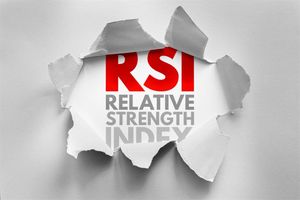
Federal Reserve Chair Jerome Powell's recent remarks, cautioning against a "no risk-free path" and labeling equity prices as "fairly highly valued," sent a tremor through U.S. financial markets today. While the broader S&P 500 (SP500) saw a 0.6% downturn, the Financials sector initially showed surprising resilience, even hitting a record high before the day's close. These comments, coming amidst a delicate economic balancing act, signal a potentially less accommodative monetary policy ahead, forcing investors and financial institutions to re-evaluate their strategies in a landscape where easy gains may be a thing of the past.
Powell's Prudence: What Happened and Why It Matters
On September 23, 2025, during a speech at the Greater Providence Chamber of Commerce, Federal Reserve Chair Jerome Powell delivered a stark message to the markets. He described a "challenging situation" where "two-sided risks mean that there is no risk-free path," highlighting the Fed's struggle to balance upside inflation risks with downside employment risks. Crucially, Powell also stated that "equity prices are fairly highly valued by many measures," directly addressing concerns about market froth following a period of significant gains. These comments arrived just after the Fed's decision to implement a 25 basis point rate cut, creating a complex narrative for market participants.
The immediate reaction was a broad market pullback. The S&P 500 closed down 0.6%, interrupting a three-day streak of record highs. The tech-heavy Nasdaq Composite (COMP:IND) experienced a more pronounced 1% drop, while the Dow Jones Industrial Average (DJI) also ended lower by 0.2%. This downturn reflected investor anxiety over potentially overvalued stocks and a recalibration of expectations for future rate cuts. However, the Financials sector initially defied this trend, with the S&P 500 financials index reaching a record high and climbing 0.9% at one point. This divergence suggests that while Powell's comments raised concerns about general equity valuations, his cautious stance on monetary easing might be perceived as a boon for certain financial institutions, particularly those that benefit from a "higher-for-longer" interest rate environment.
Shifting Sands: How Powell's Stance Might Affect the Market
Powell's remarks carry significant weight for the market, particularly for the Financials sector. His emphasis on a "no risk-free path" and "highly valued" equities signals a Federal Reserve that is less inclined to prioritize supporting asset prices and more focused on its dual mandate of price stability and maximum employment. This shift in tone could lead to a re-evaluation of growth expectations and risk appetite across the board.
For banks and traditional financial institutions, a "higher-for-longer" interest rate environment, implied by Powell's cautious approach to further rate cuts, can be a double-edged sword. On one hand, it could expand net interest margins (NIMs)—the crucial difference between the interest banks earn on loans and pay on deposits. This could directly benefit major players like JPMorgan Chase (NYSE: JPM), Bank of America (NYSE: BAC), and Wells Fargo (NYSE: WFC), allowing them to generate more profit from their core lending activities. On the other hand, a broader market downturn driven by valuation concerns could dampen loan demand and increase the risk of defaults, especially if economic growth slows.
Insurance giants such as Berkshire Hathaway (NYSE: BRK.A) could also find themselves in a favorable position. A more stable, potentially higher interest rate environment allows them to earn more on their investment portfolios, which are often substantial. Conversely, highly valued FinTech companies or other growth-oriented financial firms, whose valuations are heavily dependent on future earnings discounted at lower rates, might face increased scrutiny and downward pressure on their stock prices. Investors may rotate out of these speculative assets into more established, value-oriented financials with strong balance sheets.
Broader Implications: Navigating the New Monetary Landscape
Powell's pronouncements are not isolated; they fit into a broader trend of central banks worldwide grappling with persistent inflation pressures while trying to avoid tipping economies into recession. His "data-dependent" and "not on a preset course" rhetoric underscores a more agile, yet less predictable, monetary policy approach. This less accommodative stance could have significant ripple effects beyond just stock prices.
From a regulatory perspective, a focus on "highly valued" equities might prompt regulators to scrutinize leverage in the financial system more closely. If asset prices are indeed inflated, a sudden correction could expose vulnerabilities, potentially leading to calls for stricter capital requirements or risk management protocols for financial institutions. Historically, periods of perceived asset bubbles have often preceded regulatory tightening, making this a key area for banks and other lenders to monitor.
The current situation bears some resemblance to periods where the Fed has signaled a pivot towards tightening or a more neutral stance after extended periods of accommodation. While not a direct parallel, the message of tempering market expectations and acknowledging potential overvaluation echoes sentiments seen in previous cycles where the Fed sought to cool an overheating market without triggering a crash. This strategic communication aims to guide market behavior and prevent excessive risk-taking, which is crucial for maintaining financial stability.
What Readers Should Pay Attention to Next
In the short term, investors should closely monitor upcoming economic data releases, particularly inflation figures and employment reports, as these will heavily influence the Federal Reserve's future policy decisions. Any signs of persistent inflation could reinforce Powell's cautious stance, further delaying aggressive rate cuts and potentially solidifying the "higher-for-longer" interest rate environment. Conversely, a significant deterioration in employment data could prompt the Fed to reconsider its position, though Powell's recent comments suggest a high bar for such a pivot.
For financial institutions, adapting to this new landscape will be crucial. Banks will need to strategically manage their deposit costs and lending rates to maximize net interest margins while carefully assessing credit risk in a potentially slowing economy. Insurance companies will continue to optimize their investment portfolios for yield. Furthermore, investors should watch for any shifts in analyst sentiment regarding financial stocks, particularly the distinction between traditional value-oriented players and growth-focused FinTech firms. Strategic pivots might include greater emphasis on cost control, diversification of revenue streams, and a cautious approach to M&A activity in a less certain rate environment.
Conclusion: A Prudent Path Forward in Financial Markets
Jerome Powell's recent comments serve as a critical reminder that while the Federal Reserve aims for economic stability, it is not beholden to perpetually rising asset prices. The "no risk-free path" and "highly valued" equity remarks, coupled with the S&P 500's downturn, indicate a more challenging, yet potentially healthier, market environment ahead. The initial, somewhat counter-intuitive, resilience of the Financials sector highlights the nuanced impact of interest rate expectations on different parts of the industry.
Moving forward, investors should anticipate a period of increased scrutiny on valuations and a greater emphasis on fundamental strength. Traditional banks and insurance companies with robust balance sheets and consistent earnings may prove to be more resilient, while highly speculative or growth-dependent financial entities could face headwinds. The Fed's commitment to a data-dependent approach means that future policy shifts will be closely tied to economic indicators, demanding vigilance from all market participants. Investors should watch for further guidance from the Fed, corporate earnings reports from financial institutions, and any shifts in credit market conditions in the coming months to navigate this evolving landscape.
This content is intended for informational purposes only and is not financial advice






